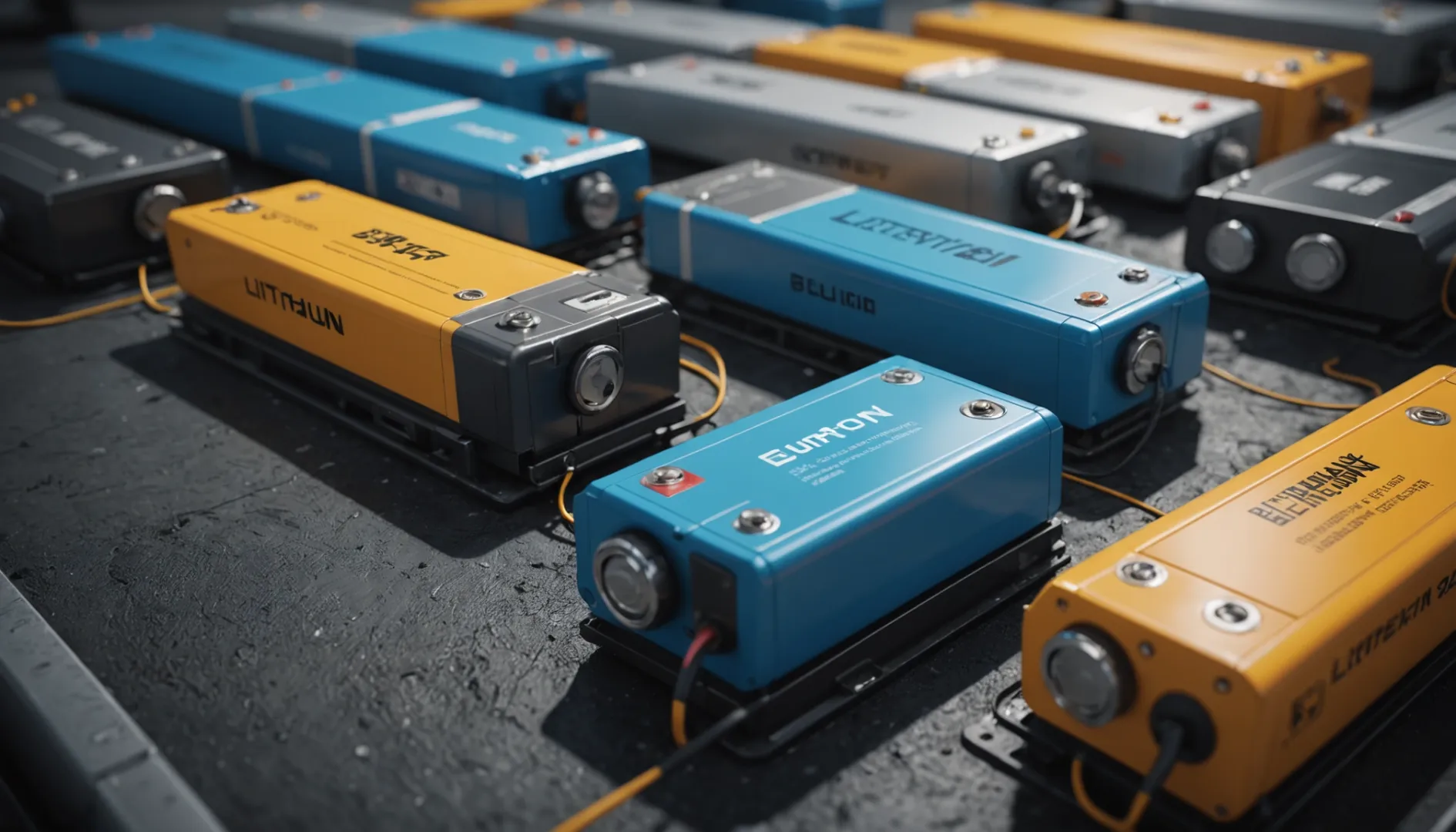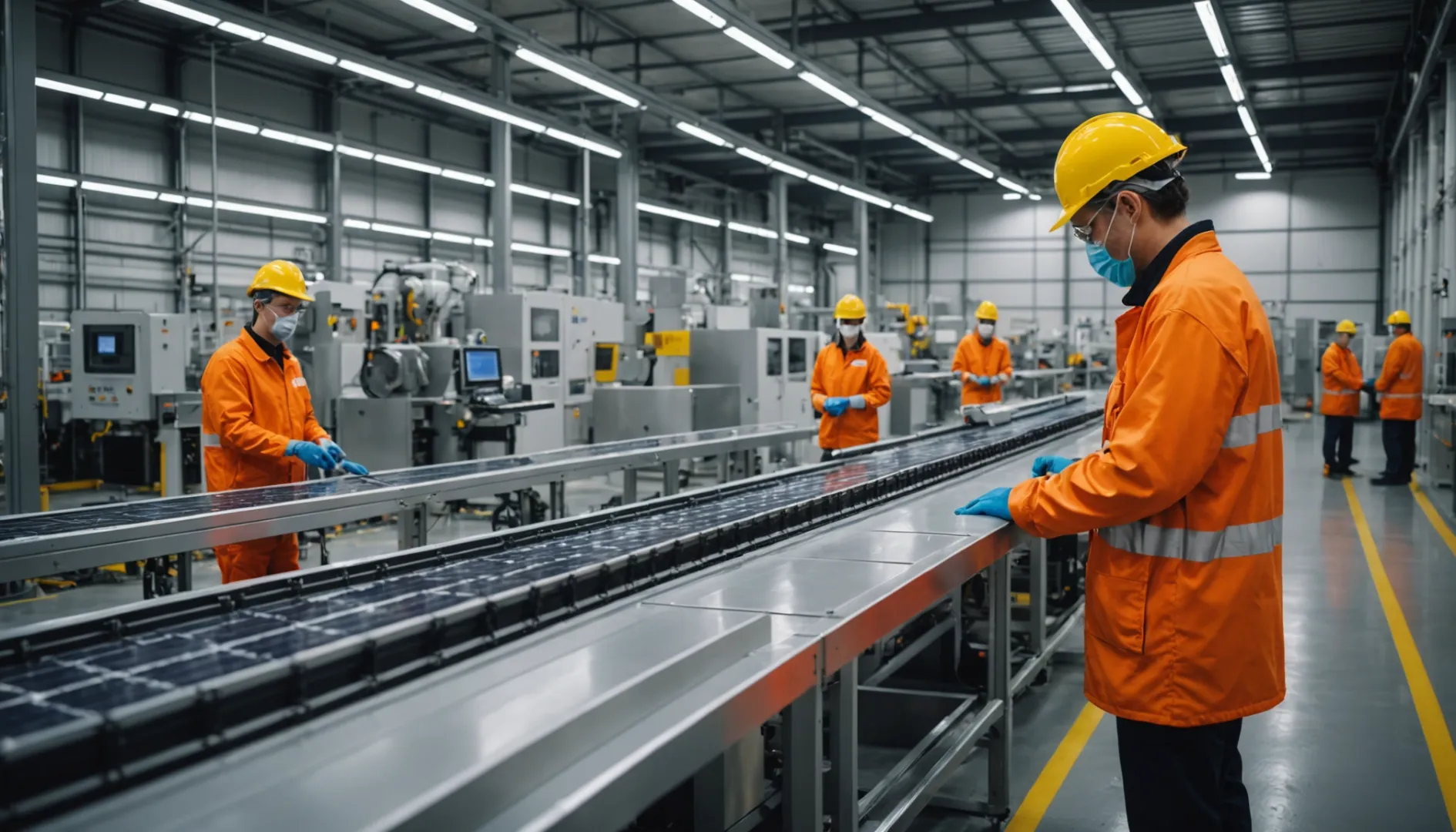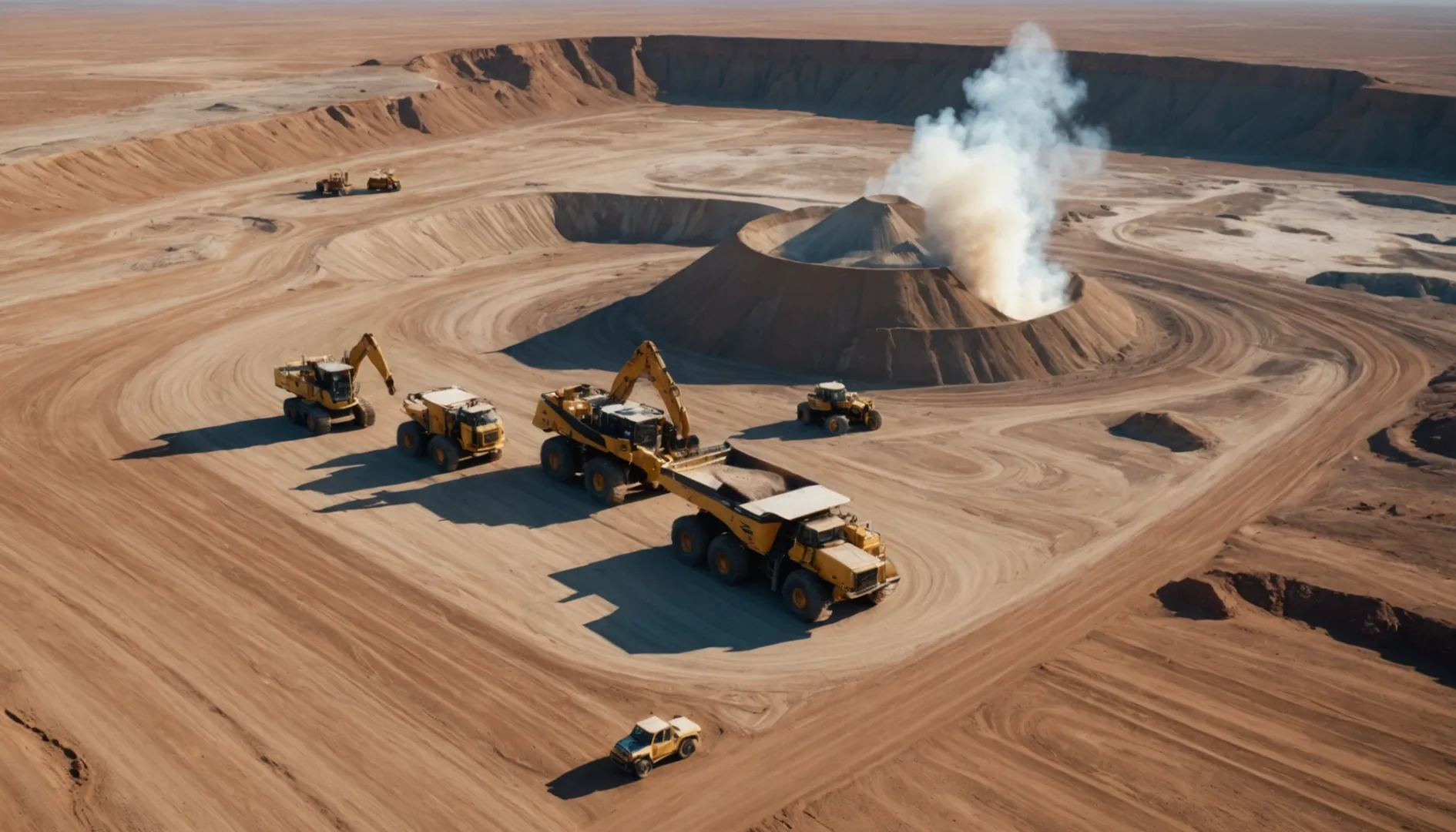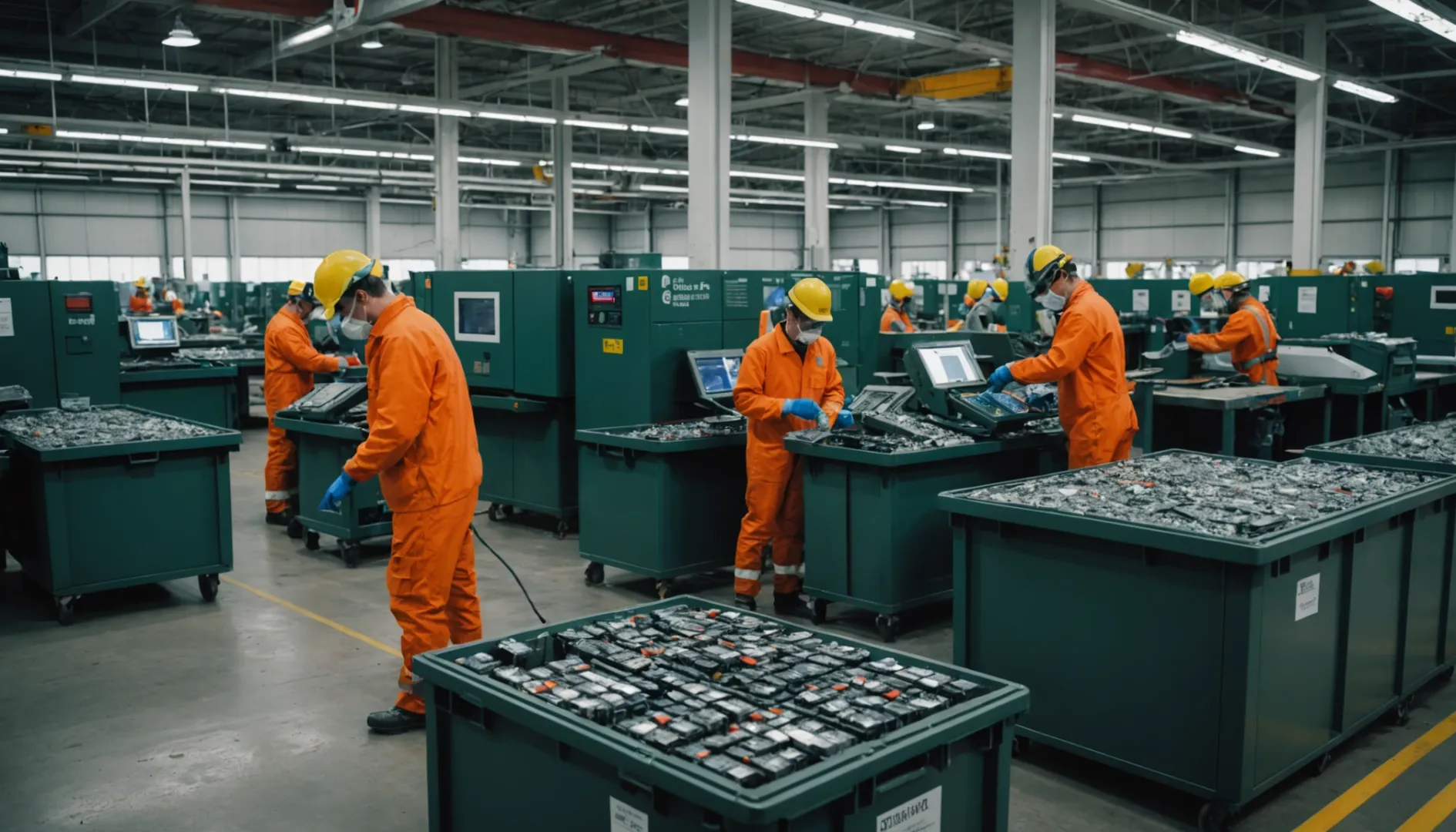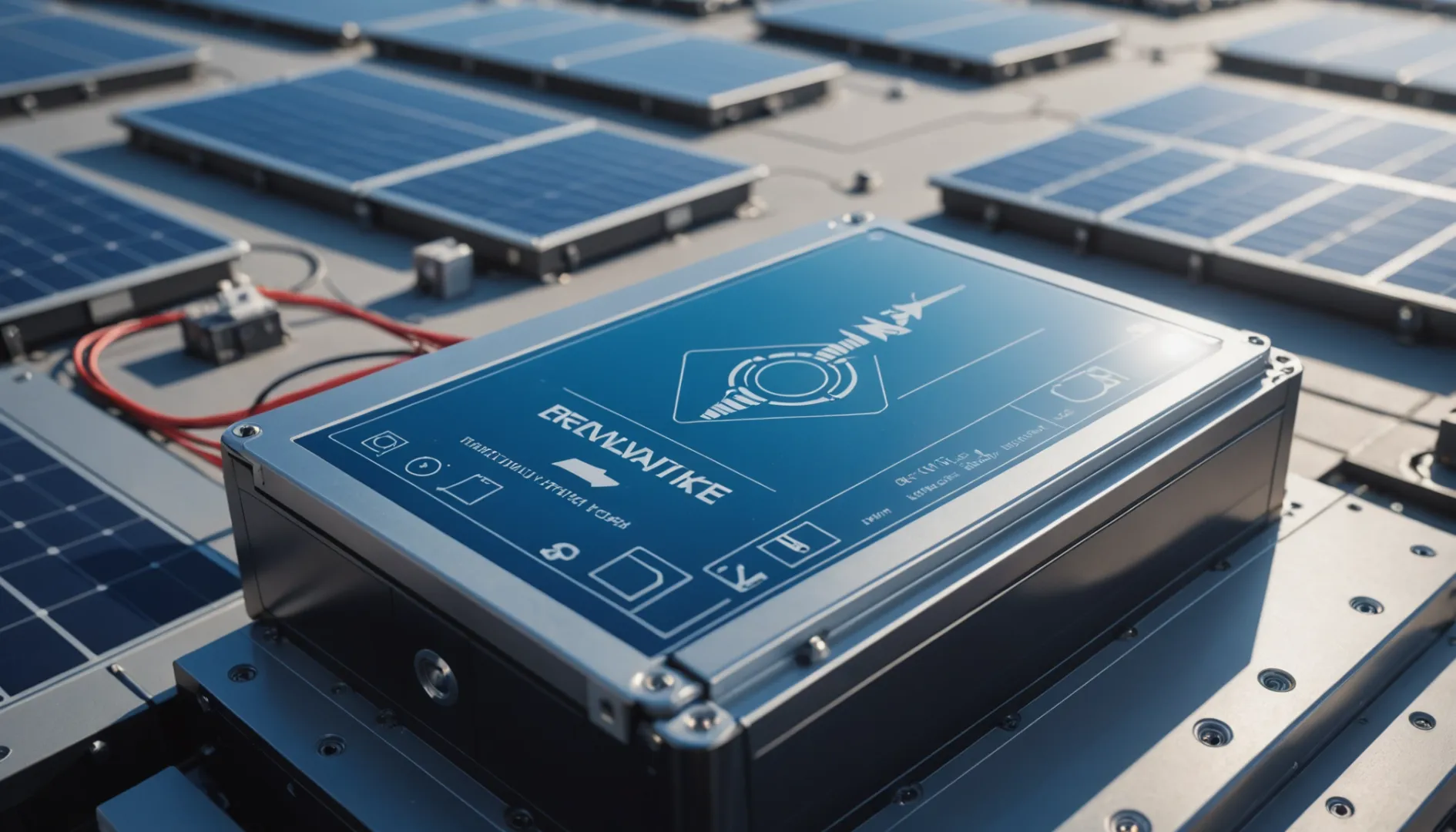Ever wondered if your electric car is truly eco-friendly? It all starts with lithium-ion batteries, the unsung heroes of green tech.
Lithium-ion batteries play a crucial role in sustainable tech by powering renewable energy and electric vehicles. However, their production and disposal come with environmental costs. While not inherently green, they support sustainability when produced and recycled responsibly.
To truly grasp the environmental impact of lithium batteries, let's embark on a journey through their life cycle—from sourcing materials to the recycling process. By examining these stages, we can better understand their potential to revolutionize energy sustainability. Imagine driving an electric car, knowing each mile is a step towards a greener planet, yet also being aware of the hidden challenges behind those miles.
Lithium-ion batteries cut carbon emissions by 50-80%.True
When paired with renewable energy, they significantly reduce emissions.
Only 5% of lithium-ion batteries are currently recycled.True
Recycling rates are low, highlighting a significant environmental challenge.
What Are the Environmental Benefits of Lithium Batteries?
Ever wonder how lithium batteries are making the world a greener place?
Lithium batteries are game-changers for the environment, helping us embrace renewable energy and cut down on emissions. They store solar and wind power, power electric vehicles, and offer a cleaner energy alternative to fossil fuels.
Facilitating Renewable Energy Storage
I remember the first time I saw a solar panel farm—an endless sea of glistening panels under the sun. But what happens when the sun goes down or the wind stops blowing? That's where lithium batteries come in. They are like the trusty backup singers that ensure the show goes on by storing excess energy generated during sunny or windy days. This storage capability means we can rely less on fossil fuels and more on these greener sources. If you're curious about how they work behind the scenes, check out storage capabilities1.
Reducing Carbon Emissions
Switching to an electric vehicle (EV) felt like stepping into the future, knowing that each mile I drove meant fewer pollutants in the air. It's all thanks to lithium batteries powering these cars without any tailpipe emissions. Remember those hazy days where you could almost taste the pollution? Electric vehicles are changing that, one quiet ride at a time. By embracing EVs, we're collectively breathing easier and inching closer to a sustainable world. Dive deeper into their emission-cutting prowess through electric vehicles2.
High Energy Density and Longevity
Imagine trying to cram all your travel essentials into a tiny backpack—sounds impossible, right? Yet lithium batteries manage to pack a punch in a compact size with their high energy density. Whether it's my smartphone lasting all day or my car cruising longer distances, these batteries are built to endure. Their long cycle life means fewer replacements, which is great news for our wallets and the planet. For more on their efficiency, visit energy density3.
Supporting Sustainable Infrastructure
When I think about sustainable cities of the future, I envision reliable energy grids powered by clean energy. Lithium batteries play a starring role by ensuring that power supply remains stable, even during peak demand or outages. This reliability is vital as we transition from fossil fuel-based grids to those dominated by renewable sources. By supporting eco-friendly urban development, these batteries are helping us build a greener tomorrow. Explore further into their role in grid systems with sustainable infrastructure4.
Lithium-ion batteries cut carbon emissions by up to 80%.True
When paired with renewables, they can reduce emissions by 50-80%.
Only 5% of lithium-ion batteries are recycled globally.True
Currently, recycling rates for lithium-ion batteries are around 5% worldwide.
How Does Lithium Mining Impact the Environment?
Lithium mining powers our eco-friendly future but isn't without its environmental costs. Let's dive into its true impact.
Lithium mining significantly impacts the environment through excessive water use, habitat destruction, and pollution. It can lead to water scarcity, contaminate water sources with harmful chemicals, and disrupt ecosystems, affecting biodiversity.
Water Usage and Scarcity
Imagine strolling through a region as dry as the Atacama Desert in Chile, where every drop of water is precious. Lithium extraction there can be a double-edged sword. While it supports clean energy initiatives, it also requires massive amounts of water, often from already scarce supplies. This has sparked tensions over water rights among local communities and industries. Excessive water usage can deplete groundwater, threatening agriculture and drinking water. Efforts are underway to develop more sustainable extraction methods5 to lessen this burden.
Habitat Destruction and Biodiversity
The vast expanse of land needed for lithium mining can seem overwhelming. Picture the earth being stripped bare, habitats lost for countless plants and animals. Roads and facilities carve through these natural landscapes, fragmenting ecosystems and disrupting wildlife patterns. Conservation groups are pushing for mining practices that minimize habitat disturbance6 to help protect our planet's biodiversity.
Chemical Pollution and Soil Degradation
Lithium extraction isn't just about removing minerals; it involves using chemicals like hydrochloric acid, which can leak into nearby soil and water systems. This contamination poses risks to aquatic life and can affect water quality for humans too. The threat of spills or improper waste disposal highlights the need for rigorous environmental management practices7 to safeguard ecosystems.
Socio-Economic Impacts on Communities
Beyond environmental concerns, the socio-economic impacts on communities near lithium mines are profound. While mining can bring economic benefits and job opportunities, it may also lead to conflicts over land rights and resource use. I've heard stories of communities divided over these issues. Ensuring fair benefit distribution8 remains a critical challenge for sustainable development in mining regions.
Lithium mining significantly impacts water resources.True
Lithium mining uses large amounts of water, affecting local resources.
Recycling rates for lithium-ion batteries exceed 50%.False
Only about 5% of lithium-ion batteries are recycled globally.
Can We Improve Lithium Battery Recycling?
Ever wondered if we can make lithium battery recycling a reality, both economically and environmentally?
Yes, we can improve lithium battery recycling by advancing technologies to efficiently recover valuable materials like lithium, cobalt, and nickel. Implementing innovative processes can reduce toxic byproducts, enhance efficiency, and increase the economic viability of recycling initiatives. These improvements will contribute to a more sustainable future by minimizing environmental damage.
The Current State of Lithium Battery Recycling
You know how it is when you get a new gadget, and the excitement of powering it up with its shiny lithium battery? Well, behind that excitement lies a stark reality. Only about 5% of these batteries are actually recycled worldwide. It’s like trying to solve a puzzle with missing pieces—resource waste and environmental concerns are big issues. Current recycling methods are often inefficient and costly, which is a major hurdle for broader adoption.
Emerging Technologies in Recycling
But here's the hopeful part—new technologies are stepping up to tackle these challenges. Imagine mechanical processes that make disassembly as easy as peeling an orange, or hydrometallurgical methods that use less toxic chemicals9. These innovations not only recover valuable materials like cobalt and lithium but also significantly reduce environmental impact.
Economic Viability of Recycling Initiatives
I remember discussing with a friend about how recycling just has to be economically viable to really take off. And it seems like we're getting there. As technology advances, so do new business models that make recycling more profitable. Programs focusing on creating markets for recycled materials can stimulate demand and investment in sustainable recycling10 technologies, making those financial barriers feel less daunting.
Policy and Consumer Awareness
Policies play a massive role here. Governments can drive changes by implementing stricter regulations on disposal and encouraging producer responsibility. Plus, if more of us know about our recycling options, participation rates could skyrocket. It's like we all become part of the solution together.
Local Resources for Battery Disposal
Access to local recycling facilities is a game changer. Imagine if communities had easy access to information about nearby recycling centers and programs offering safe disposal11 options. This would ensure that batteries are processed responsibly, not just tossed aside.
Exploring these aspects shows multiple ways we can enhance lithium battery recycling, contributing to a more sustainable environment. It's a journey that involves innovation, awareness, and collaboration—and I'm excited to see where it leads.
Lithium-ion batteries reduce carbon emissions by 50-80%.True
When paired with renewable energy, they significantly cut emissions.
Only 5% of lithium-ion batteries are recycled globally.True
The global recycling rate for these batteries is currently very low.
What Alternatives Exist to Lithium Batteries?
Ever wondered what's beyond lithium batteries? With sustainability on our minds, exploring alternatives is becoming more essential.
Alternatives to lithium batteries include sodium-ion, magnesium, solid-state, and flow batteries. These options present benefits in sustainability, cost, and safety, offering promising pathways in energy storage innovation. Each alternative has its own set of advantages and challenges, highlighting the exciting evolution of battery technology.
Sodium-Ion Batteries
I remember the first time I heard about sodium-ion batteries; it was during a casual chat at a renewable energy expo. The idea struck me because sodium is so abundant, unlike lithium. Sodium-ion batteries mimic the workings of lithium-ion but use sodium ions instead. While they don't pack the same punch in terms of energy density right now, they're a hotbed of research aimed at improving that. They're being eyed for big stationary setups where space isn't as much of an issue as in your pocket devices. Dive into the sodium-ion technology potential12 if you're curious about its eco-friendly promise.
Magnesium and Other Metal-Ion Batteries
Then there's magnesium-ion batteries. A friend who's a battery researcher once mentioned how magnesium might just be the dark horse in this race. It boasts a higher volumetric capacity, potentially leading to denser energy storage than lithium. Plus, it doesn't have that pesky dendrite problem that lithium does, making it safer. But the hunt for the perfect electrolyte to play nice with magnesium is still on. There's also buzz around zinc and aluminum as contenders. Check out more on metal-ion battery innovations13 that could turn the tide in energy storage.
Solid-State Batteries
I have a soft spot for solid-state batteries because they feel like a glimpse into the future. By ditching liquid electrolytes for solid ones, they boost safety and energy density while slashing fire risks. Imagine quicker charges and batteries that last longer—sounds like sci-fi, but it's inching closer to reality, especially in electric vehicles and gadgets we can't live without. If you're intrigued, explore advancements in solid-state14 batteries that could revolutionize industries.
Flow Batteries
And let's not forget flow batteries. Picture this: energy stored in liquid form within tanks—a bit like a high-tech gas station for electrons! These are particularly suited for large-scale storage where flexibility is king. Vanadium redox flow batteries are a popular kid on the block due to their durability and longevity, although they come with a hefty price tag initially due to their complex setup. Discover the benefits of flow battery systems15 for renewable energy.
Each of these alternatives has its own charm and challenges, shaped by the applications they're meant to power and the tech strides yet to be made. It's an exhilarating time in the world of battery innovation.
Lithium-ion batteries reduce emissions by 50-80% with renewables.True
When paired with renewable energy, lithium-ion batteries significantly cut carbon emissions.
Only 5% of lithium-ion batteries are recycled globally.True
Currently, recycling rates for lithium-ion batteries are very low, around 5% worldwide.
Conclusion
Lithium-ion batteries are vital for renewable energy and electric vehicles, but their production and recycling pose environmental challenges. Responsible sourcing and improved recycling are essential for sustainability.
-
Explore how lithium batteries enhance renewable energy integration. ↩
-
Discover how EVs reduce emissions with lithium battery technology. ↩
-
Learn about the high energy density and longevity of lithium batteries. ↩
-
Understand how they support eco-friendly urban development. ↩
-
Discover innovative techniques reducing water use in lithium extraction. ↩
-
Learn about strategies to minimize habitat destruction from mining. ↩
-
Explore how rigorous practices prevent pollution in mining areas. ↩
-
Understand strategies for equitable sharing of mining profits. ↩
-
Discover safer chemical alternatives in battery recycling processes. ↩
-
Learn about cutting-edge technologies enhancing sustainable battery recycling. ↩
-
Find safe, responsible disposal methods for lithium batteries. ↩
-
Explore sodium-ion's potential as a sustainable battery solution. ↩
-
Learn about new developments in magnesium battery technology. ↩
-
Discover recent advancements in solid-state battery tech. ↩
-
Understand how flow batteries integrate with renewable sources.
TOWO Power Is a leader for solar product solution company from China ↩


